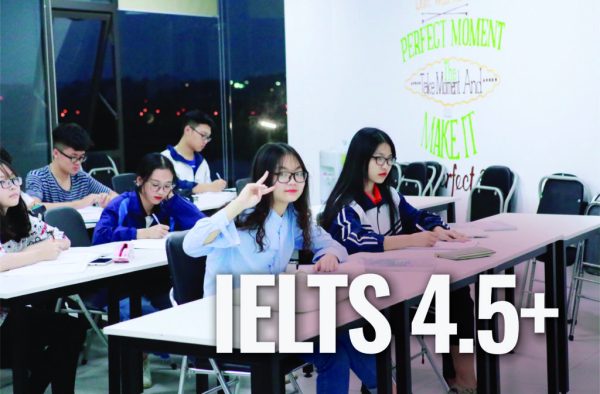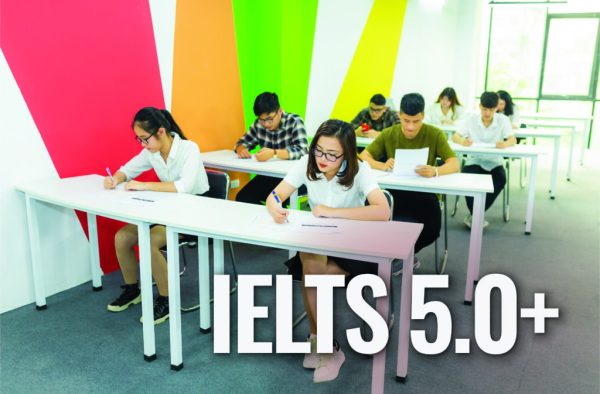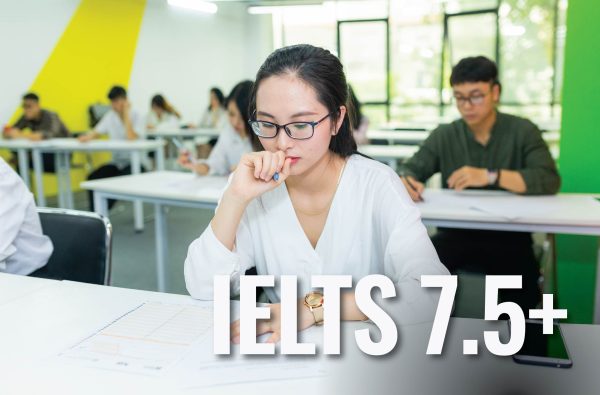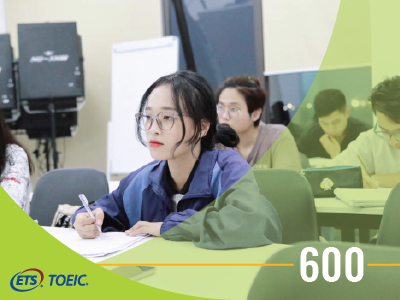Nhận tư vấn về lộ trình học
Roman shipbuilding and navigation
11 Tháng 12, 2023 | 632 lượt xem
Giải đề IELTS Reading Cambridge 16. Test 3. Passage 1. Roman shipbuilding and navigation. Đóng tàu và xác định phương hướng ở thời kỳ La Mã.

(Đoạn 1)
Shipbuilding today is based on science and ships are built using computers and sophisticated tools. Shipbuilding in ancient Rome, however, was more of an art relying on estimation, inherited techniques and personal experience. The Romans were not traditionally sailors but mostly land- based people, (Question 1) who learned to build ships from the people that they conquered, namely the Greeks and the Egyptians.
Việc đóng tàu ngày nay dựa trên khoa học và quá trình đóng tàu được hỗ trợ bằng máy tính và các công cụ tinh vi. Tuy nhiên, việc đóng tàu ở La Mã cổ đại lại là một nghệ thuật dựa trên sự ước tính, các kỹ thuật kế thừa và kinh nghiệm cá nhân. Theo truyền thống, người La Mã không phải là thủy thủ mà chủ yếu là những người sống trên đất liền, họ học cách đóng tàu từ những đất nước mà họ đã chinh phục, cụ thể là người Hy Lạp và người Ai Cập.
(Đoạn 2)
There are a few surviving written documents that give descriptions and representations of ancient Roman ships, including the sails and rigging. Excavated vessels also provide some clues about ancient shipbuilding techniques. Studies of these have taught us that ancient Roman shipbuilders built the outer hull first, then proceeded with the frame and the rest of the ship. Planks used to build the outer hull were initially sewn together. Starting from the 6th century BCE, (Question 2) they were fixed using a method called mortise and tenon, whereby one plank locked into another without the need for stitching. Then in the first centuries of the current era, (Question 3) Mediterranean shipbuilders shifted to another shipbuilding method, still in use today, which consisted of building the frame first and then proceeding with the hull and the other components of the ship. This method was more systematic and dramatically shortened ship construction times. The ancient Romans built large merchant ships and warships whose size and technology were unequalled until the 16th century CE.
Có một số tài liệu bằng văn bản còn sót lại cung cấp các mô tả và hình ảnh đại diện của các con tàu La Mã cổ đại, bao gồm cả các cánh buồm và giàn khoan. Những con tàu được khai quật cũng cung cấp một số manh mối về kỹ thuật đóng tàu cổ đại. Nghiên cứu về những điều này đã cho chúng ta biết rằng những người đóng tàu La Mã cổ đại đã xây dựng thân tàu bên ngoài trước, sau đó tiến hành với khung và phần còn lại của con tàu. Các tấm ván được sử dụng để đóng vỏ ngoài ban đầu được lắp ráp lại với nhau. Bắt đầu từ thế kỷ thứ 6 trước Công nguyên, chúng được cố định bằng một phương pháp gọi là mộng và mộng, theo đó một tấm ván được khóa vào một tấm ván khác mà không cần ráp lại. Sau đó, trong những thế kỷ đầu tiên của thời đại hiện tại, các công ty đóng tàu Địa Trung Hải chuyển sang một phương pháp đóng tàu khác, vẫn được sử dụng cho đến ngày nay, bao gồm đóng khung trước rồi mới tiến hành đóng thân tàu và các bộ phận khác của con tàu. Phương pháp này có hệ thống hơn và rút ngắn đáng kể thời gian đóng tàu. Người La Mã cổ đại đã chế tạo các tàu buôn và tàu chiến lớn với kích thước và công nghệ vô song cho đến thế kỷ 16 sau Công nguyên.
(Đoạn 3)
(Question 6) Warships were built to be lightweight and very speedy. They had to be able to sail near the coast, which is why they had no ballast or excess load and were built with a long, narrow hull. They did not sink when damaged and often would lie crippled on the sea’s surface following naval battles. (Question 7) They had a bronze battering ram, which was used to pierce the timber hulls or break the oars of enemy vessels. Warships used both wind (sails) and human power (oarsmen) and were therefore very fast. (Question 4) Eventually, Rome’s navy became the largest and most powerful in the Mediterranean, and the Romans had control over what they therefore called Mare Nostrum meaning ‘our sea’.
Tàu chiến được chế tạo để có trọng lượng nhẹ và rất nhanh. Chúng phải có khả năng di chuyển gần bờ biển, đó là lý do tại sao chúng không có chấn lưu hoặc không được phép quá tải và được chế tạo với thân tàu dài và hẹp. Chúng không chìm khi bị hư hại và thường nằm liệt trên mặt biển sau các trận hải chiến. Thường có một thanh búa đập bằng đồng, dùng để đâm thủng vỏ tàu bằng gỗ hoặc làm gãy mái chèo của tàu địch. Tàu chiến sử dụng cả sức gió (cánh buồm) và sức người (người chèo) nên rất nhanh. Chính vì lẽ đó, hải quân của La Mã trở thành lực lượng lớn nhất và hùng mạnh nhất ở Địa Trung Hải, và người La Mã đã kiểm soát được cái mà họ gọi là Mare Nostrum nghĩa là ‘biển của chúng ta’.
(Đoạn 4)
There were many kinds of warships. (Question 8) The ‘trireme’ was the dominant warship from the 7th to 4th century BCE. It had rowers in the top, middle and lower levels, and approximately 50 rowers in each bank. The rowers at the bottom had the most uncomfortable position as they were under the other rowers and were exposed to the water entering through the oar-holes. (Question 5) It is worth noting that contrary to popular perception, rowers were not slaves but mostly Roman citizens enrolled in the military. The trireme was superseded by larger ships with even more rowers.
Có nhiều loại tàu chiến. ‘Trireme’ là loại tàu chiến thống trị từ thế kỷ thứ 7 đến thế kỷ thứ 4 trước Công nguyên. Nó có các tay chèo ở hàng cao nhất, trung bình và thấp hơn, và khoảng 50 tay chèo ở mỗi hàng. Những tay chèo ở phía dưới có tư thế khó chịu nhất vì họ ở dưới những tay chèo khác và bị nước tràn vào qua các lỗ mái chèo. Điều đáng chú ý là trái ngược với nhận thức phổ biến, những người chèo thuyền không phải là nô lệ mà chủ yếu là công dân La Mã đăng ký vào quân đội. Trireme sau đó được thay thế bằng những con tàu lớn hơn với nhiều tay chèo hơn.
(Đoạn 5)
(Question 9) Merchant ships were built to transport lots of cargo over long distances and at a reasonable cost. They had a wider hull, double planting and a solid interior for added stability. Unlike warships, their V-shaped hull was deep underwater, meaning that they could not sail too close to the coast. (Question 10) They usually had two huge side rudders located off the stern and controlled by a small tiller bar connected to a system of cables. They had from one to three masts with large square sails and a small triangular sail at the bow. Just like warships, (Question 11) merchant ships used oarsmen, but coordinating the hundreds of rowers in both types of ship was not an easy task. In order to assist them, music would be played on an instrument, and oars would then keep time with this.
Tàu buôn được đóng để vận chuyển nhiều hàng hóa trên một quãng đường dài với chi phí hợp lý. Chúng có thân tàu rộng hơn, giàn kép và nội thất chắc chắn để tăng thêm độ ổn định. Không giống như tàu chiến, thân tàu hình chữ V của chúng nằm sâu dưới nước, nghĩa là chúng không thể đi thuyền quá gần bờ biển. Chúng thường có hai bánh lái phụ khổng lồ nằm ngoài đuôi tàu và được điều khiển bởi một thanh lái nhỏ nối với hệ thống dây cáp. Chúng có từ một đến ba cột buồm với những cánh buồm hình vuông lớn và một cánh buồm nhỏ hình tam giác ở mũi thuyền. Cũng giống như tàu chiến, thương thuyền cũng sử dụng tay chèo, nhưng việc điều phối hàng trăm tay chèo của cả hai loại tàu không phải là việc dễ dàng. Để hỗ trợ họ, âm nhạc sẽ được chơi trên một nhạc cụ và người chèo thuyền cũng sẽ canh thời gian của việc này.
(Đoạn 6)
(Question 12) The cargo on merchant ships included raw materials (e.g. iron bars, copper, marble and granite), and agricultural products (e.g. grain from Egypt’s Nile valley). During the Empire, Rome was a huge city by ancient standards of about one million inhabitants. Goods from all over the world would come to the city through the port of Pozzuoli situated west of the bay of Naples in Italy and through the gigantic port of Ostia situated at the mouth of the Tiber River. (Question 13) Large merchant ships would approach the destination port and, just like today, be intercepted by a number of towboats that would drag them to the quay.
Hàng hóa trên các tàu buôn bao gồm nguyên liệu thô (ví dụ: thanh sắt, đồng, đá cẩm thạch và đá granit) và nông sản (ví dụ: ngũ cốc từ thung lũng sông Nile của Ai Cập). Trong thời Đế chế, Rome là một thành phố lớn theo tiêu chuẩn cổ xưa với khoảng một triệu cư dân. Hàng hóa từ khắp nơi trên thế giới sẽ đến thành phố qua cảng Pozzuoli nằm ở phía tây vịnh Naples ở Ý và qua cảng Ostia khổng lồ nằm ở cửa sông Tiber. Các tàu buôn lớn sẽ tiếp cận cảng đích và giống như ngày nay, bị chặn lại bởi một số tàu kéo để kéo họ vào cầu cảng.
(Đoạn 7)
The time of travel along the many sailing routes could vary widely. Navigation in ancient Rome did not rely on sophisticated instruments such as compasses but on experience, local knowledge and observation of natural phenomena. In conditions of good visibility, seamen in the Mediterranean often had the mainland or islands in sight, which greatly facilitated navigation. They sailed by noting their position relative to a succession of recognisable landmarks. When weather conditions were not good or where land was no longer visible, Roman mariners estimated directions from the pole star or, with less accuracy, from the Sun at noon. They also estimated directions relative to the wind and swell. Overall, shipping in ancient Roman times resembled shipping today with large vessels regularly crossing the seas and bringing supplies from their Empire.
Thời gian di chuyển dọc theo nhiều tuyến đường chèo thuyền có thể rất khác nhau. Việc xác định phương hướng ở La Mã cổ đại không dựa vào các công cụ tinh vi như la bàn mà dựa vào kinh nghiệm, kiến thức địa phương và quan sát các hiện tượng tự nhiên. Trong điều kiện tầm nhìn tốt, các thủy thủ ở Địa Trung Hải thường nhìn thấy đất liền hoặc các đảo, điều này tạo điều kiện thuận lợi cho việc điều hướng. Họ lái thuyền bằng cách ghi nhận vị trí của mình so với một chuỗi các địa danh dễ nhận biết. Khi điều kiện thời tiết không tốt hoặc khi không còn nhìn thấy đất liền, các nhà hàng hải La Mã ước tính phương hướng từ sao cực hoặc, với độ chính xác thấp hơn, từ Mặt trời vào buổi trưa. Họ cũng ước tính các hướng liên quan đến gió và sóng. Nhìn chung, việc vận chuyển trong thời La Mã cổ đại giống như vận chuyển ngày nay với các tàu lớn thường xuyên vượt biển và mang theo nguồn cung cấp từ Đế chế của họ.
Danh mục
IELTS Reading. Questions 1-5
Questions 1-5
Do the following statements agree with the information given in Reading Passage 1?
In boxes 1-5 on your answer sheet, write
TRUE if the statement agrees with the information
FALSE if the statement contradicts the information
NOT GIVEN if there is no information on this
Giải thích đáp án các câu 1-5
Câu 1:
The Romans’ shipbuilding skills were passed on to the Greeks and the Egyptians.
=> Đáp án Câu 1: FALSE
Dẫn chứng trong đoạn 1:
Thông tin đối lập trong câu hỏi và trong bài văn:
| Trong câu hỏi:passed on to (được truyền lại cho) the Greeks and the Egyptians | Trong bài văn learned from (được học từ) the Greeks and the Egyptians |
Câu 2:
Skilled craftsmen were needed for the mortise and tenon method of fixing planks.
=> Đáp án Câu 2: NOT GIVEN
Dẫn chứng trong đoạn 2:
Starting from the 6th century BCE, they were fixed using a method called mortise and tenon, whereby one plank locked into another without the need for stitching
Đoạn văn có nhắc đến các từ khóa mortise và tenon method, tuy nhiên không nhắc đến thông tin có cần những thợ thủ công lành nghề hay không (skilled craftsmen were needed).
Câu 3:
The later practice used by Mediterranean shipbuilders involved building the hull before the frame.
=> Đáp án Câu 3: FALSE
Dẫn chứng trong đoạn 2:
Thông tin đối lập trong câu hỏi và trong bài văn:
| Trong câu hỏi:building the hull before the frame | Trong bài văn building the frame first and then proceeding with the hull |
Câu 4:
The Romans called the Mediterranean Sea Mare Nostrum because they dominated its use.
=> Đáp án Câu 4: TRUE
Dẫn chứng trong đoạn 3:
Thông tin trùng khớp trong câu hỏi và trong bài văn:
| Trong câu hỏi:called the Mediterranean Sea Mare Nostrumdominated | Trong bài văn called Mare Nostrum meaning ‘our sea’control over |
Câu 5:
Most rowers on ships were people from the Roman army.
=> Đáp án Câu 5: TRUE
Dẫn chứng trong đoạn 4:
Thông tin trùng khớp trong câu hỏi và trong bài văn:
| Trong câu hỏi:most rowersfrom the Roman army | Trong bài văn rowers, mostlyRoman citizens enrolled in the military |
IELTS Reading. Questions 6-13
Questions 6-13
Complete the summary below.
Choose ONE WORD ONLY from the passage for each answer.
| Warships and merchant ships Warships were designed so that they were 6 ………………… and moved quickly. They often remained afloat after battles and were able to sail close to land as they lacked any additional weight. A battering ram made of 7 ………………… was included in the design for attacking and damaging the timber and oars of enemy ships. Warships, such as the ‘trireme’, had rowers on three different 8 ………………… .Unlike warships, merchant ships had a broad 9 ………………… that lay far below the surface of the sea. Merchant ships were steered through the water with the help of large rudders and a tiller bar. They had both square and 10 ………………… sails. On merchant ships and warships, 11 ………………… was used to ensure rowers moved their oars in and out of the water at the same time.Quantities of agricultural goods such as 12 ………………… were transported by merchant ships to two main ports in Italy. The ships were pulled to the shore by 13 ………………… . When the weather was clear and they could see islands or land, sailors used landmarks that they knew to help them navigate their route. |
Giải thích đáp án các câu 6-13
Câu 6:
Warships were designed so that they were ………………… and moved quickly.
=> Đáp án Câu 6: lightweight
Dẫn chứng trong đoạn 3:
Warships were built to be lightweight and very speedy.
designed = built
moved quickly = very speedy
Câu 7:
A battering ram made of ………………… was included in the design for attacking and damaging the timber and oars of enemy ships.
=> Đáp án Câu 7: bronze
Dẫn chứng trong đoạn 3:
They had a bronze battering ram, which was used to pierce the timber hulls or break the oars of enemy vessels.
designed = built
moved quickly = very speedy
Câu 8:
Warships, such as the ‘trireme’, had rowers on three different ………………… .
=> Đáp án Câu 8: levels
Dẫn chứng trong đoạn 4:
The ‘trireme’ was the dominant warship from the 7th to 4th century BCE. It had rowers in the top, middle and lower levels, and approximately 50 rowers in each bank.
rowers on three different level = rowers in the top, middle and lower levels
Câu 9:
Unlike warships, merchant ships had a broad……………… that lay far below the surface of the sea.
=> Đáp án Câu 9: hull
Dẫn chứng trong đoạn 5:
They had a wider hull, double planking and a solid interior for added stability. Unlike warships, their V-shaped hull was deep underwater, meaning that they could not sail too close to the coast.
merchant ships = they
lay far below the surface of the sea = deep underwater
broad = wider
Câu 10:
Merchant ships were steered through the water with the help of large rudders and a tiller bar. They had both square and ………………… sails.
=> Đáp án Câu 10: triangular
Dẫn chứng trong đoạn 5:
They usually had two huge side rudders located off the stern and controlled by a small tiller bar connected to a system of cables. They had from one to three masts with large square sails and a small triangular sail at the bow.
large rudders = two huge side rudders
square and triangular sail = large square sails and a small triangular sail
Câu 11:
On merchant ships and warships, ………………… was used to ensure rowers moved their oars in and out of the water at the same time.
=> Đáp án Câu 11: music
Dẫn chứng trong đoạn 5:
Just like warships, merchant ships used oarsmen, but coordinating the hundreds of rowers in both types of ship was not an easy task. In order to assist them, music would be played on an instrument, and oars would then keep time with this.
merchant ships and warships = both types of ship
music was used = music would be played on an instrument
Câu 12:
Quantities of agricultural goods such as ………………… were transported by merchant ships to two main ports in Italy.
=> Đáp án Câu 12: grain
Dẫn chứng trong đoạn 5:
The cargo on merchant ships included raw materials (e.g. iron bars, copper, marble and granite), and agricultural products (e.g. grain from Egypt’s Nile valley).
agricultural goods such as grain = agricultural products (e.g. grain …)
Câu 13:
The ships were pulled to the shore by…………………
=> Đáp án Câu 13: towboats
Dẫn chứng trong đoạn 6:
Large merchant ships would approach the destination port and, just like today, be intercepted by a number of towboats that would drag them to the quay.
were pulled to the shore = drag them to the quay
Bí quyết chinh phục IELTS Reading
Để đạt điểm cao trong IELTS Reading, bạn nên nắm rõ tips và chiến lược để làm bài với từng dạng đề cụ thể. Dù scanning và skimming là 2 kỹ năng nhất định phải dùng trong bài thi IELTS nhưng tùy từng dạng, chúng ta sẽ áp dụng ở những bước khác nhau.
Hãy tiếp tục theo dõi chuyên mục IELTS Reading của Universal Language Center và cùng tìm hiểu bí quyết chinh phục từng dạng đề thi IELTS Reading bạn nhé!
Để liên tục đánh giá trình độ hiện tại, hãy tham khảo bài thi tại đây: http://m.me/universal.edu.vn/
Hoặc tham dự thi thử bài thi IELTS IDP miễn phí tại các cơ sở của Universal Language Center:
- Cơ Sở 01: 262 Lạc Trung, Hai Bà Trưng, Hà Nội
- Cơ Sở 02: 114 Hoàng Như Tiếp, Long Biên, Hà Nội
- Cơ Sở 03: 12/36 Phan Kế Bính, Ba Đình, Hà Nội
- Cơ Sở 04: 619 Nguyễn Văn Cừ, Long Biên, Hà Nội
- Cơ Sở 05: 23 Tô Vĩnh Diện, Thanh Xuân, Hà Nội
- Cơ Sở 06: 222 Lý Nam Đế, Tân Quang, Tuyên Quang
- VPTNĐK: 1/58 Việt Hưng, Long Biên, Hà Nội
Tham khảo khóa học IELTS Cam kết đầu ra 7.5+ tại Universal: https://universal.edu.vn/khoa-hoc/khoa-hoc-ielts-mastery/
ĐĂNG KÝ NHẬN TIN






